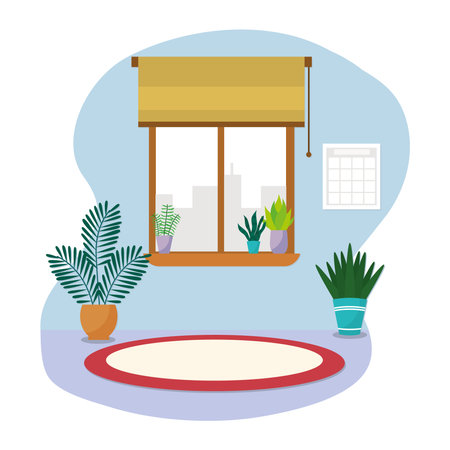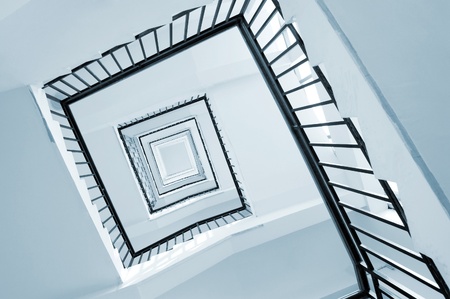A Play of Perception: The History of Optical Illusions in Victorian Homes
Step into a classic Victorian terrace and you’ll find yourself immersed in a world where perception was carefully curated. During the 19th century, Victorians became masters of visual trickery, harnessing the subtle magic of light, mirrors, and decorative flourishes to transform even the most modest terraced homes into spaces of apparent grandeur. This playful manipulation of space and sight wasn’t just an aesthetic whim; it was a clever solution to the limitations imposed by the typical narrow, elongated layouts of British terraced housing. By strategically placing mirrors to double the sense of depth or using patterned wallpapers that teased the eye, homeowners created rooms that felt larger, lighter, and infinitely more sophisticated than their actual dimensions might suggest. Light fittings were selected not only for their function but also for their ability to cast dramatic shadows and highlights across ornate cornices and gilded frames. Such design ingenuity allowed Victorians to elevate everyday living, making their humble terraces feel like elegant townhouses worthy of London society. In this way, optical illusions became both a practical tool and a hallmark of Victorian interior style—a testament to the era’s boundless creativity and desire to impress.
Reflective Realms: Strategic Mirror Placement
In the heart of Victorian terraces, where space is often at a premium and natural light can be scarce, mirrors have long served as a secret weapon for both classic and contemporary designers. The strategic placement of mirrors transforms these traditionally narrow interiors, not only by amplifying available daylight but also by conjuring the illusion of width and grandeur so characteristic of British domestic elegance.
Expanding Space with Light
Mirrors are an age-old solution to the quintessentially British dilemma of compact corridors and modest reception rooms. By positioning large, bevelled-edge mirrors opposite windows or adjacent to doorways, it becomes possible to bounce precious sunlight deep into the heart of a home. This technique not only brightens shadowy nooks but also fosters a sense of openness, counteracting the inherent cosiness of terrace layouts.
Multiplying Ornate Features
Victorian architecture is renowned for its decorative details—think intricate cornices, tiled hearths, and stained glass. Cleverly placed mirrors can double the visual impact of these ornate features, reflecting period charm throughout adjoining spaces. Whether set above a fireplace or along a picture rail, mirrors act as curators, showcasing beloved architectural elements from unexpected vantage points.
Classic vs. Modern Approaches: A Comparative Glance
| Approach | Classic Victorian | Modern Twist |
|---|---|---|
| Mirror Style | Gilt-edged, antique frames | Sleek frameless or geometric shapes |
| Placement Strategy | Above mantelpieces and in hallways | Across entire walls or as modular panels |
| Main Purpose | Enhance grandeur & reflect candlelight | Create depth & maximise natural light |
| Effect on Space | Adds historical character & drama | Makes rooms feel larger & more contemporary |
This interplay between heritage and innovation allows today’s designers and homeowners to honour Victorian legacy while embracing modern sensibilities. Ultimately, thoughtful mirror placement is more than mere decoration; it is a transformative tool for crafting brighter, airier, and visually enchanting homes within Britain’s beloved terraces.

3. The Magic of Daylight: Harnessing Natural Light
Victorian terraces, with their charming proportions and elongated layouts, have always posed a delightful challenge for those wishing to illuminate every nook and cranny. Traditionally, British ingenuity has shone through in the clever use of natural daylight, transforming what might otherwise be gloomy spaces into vibrant and inviting interiors. One of the most iconic features is the sash window—a staple in period homes across the UK. These vertically sliding windows not only offer elegance but are positioned strategically to funnel sunlight deep into rooms, maximising light even on overcast days.
Fanlights—those decorative glazed panels perched above doors—are another classic solution. Originally introduced to usher daylight into entrance halls, fanlights continue to provide a gentle glow that softens narrow corridors and stairways. Glass-panelled doors, whether internal or leading onto garden spaces, further this tradition by dissolving barriers between rooms and allowing sunshine to travel freely throughout the home.
For homeowners seeking to amplify these effects today, restoring original features is key. Repainting window frames in lighter shades reflects more sunlight indoors, while ensuring sashes operate smoothly means they can be opened wide during brighter hours. Where privacy is needed without sacrificing luminosity, frosted glass or etched panels in doors and fanlights maintain a sense of seclusion whilst still inviting in the day’s rays. Through these time-honoured methods, Victorian terraces become radiant sanctuaries—proof that a touch of British heritage can truly fool the eye and warm the soul.
4. Clever Contrasts: Layering Light and Shadow
Victorian terraces, with their high ceilings, ornate cornicing, and elongated sash windows, offer a unique canvas for playing with light and shadow. The interplay between artificial and natural illumination, combined with the eras sumptuous colour palettes, can dramatically alter ones perception of space—making rooms appear loftier or more expansive than their true dimensions. This clever manipulation is a hallmark of optical illusion in period interiors.
Natural vs Artificial Light: A Delicate Dance
The typical Victorian terrace benefits from generous natural light thanks to tall windows, yet many rooms are long and narrow, often shadowed by neighbouring properties. By layering lighting sources—think gilt chandeliers, wall sconces, and candelabra—the Victorians created shimmering gradients that softened corners and banished gloom. Modern adaptations embrace this ethos by integrating dimmable LEDs and pendant lamps that echo the original features while allowing homeowners to adjust ambience throughout the day.
The Power of Colour: Depth Through Tonal Contrast
Victorian interiors favoured deep, jewel-like hues such as emerald green, claret red, and Prussian blue. These rich shades absorb light, imparting a sense of intimacy and warmth. When paired with lighter ceilings or cleverly positioned mirrors, they create an upward thrust—fooling the eye into perceiving greater height. Designers today use these contrasts to accentuate architectural features like picture rails and skirting boards, further enhancing the illusion of layered space.
Strategies for Enhancing Illusion
| Technique | Description | Effect on Space |
|---|---|---|
| Layered Lighting | Combining wall lights, overhead pendants, and table lamps | Adds dimension and flexibility; defines zones within open rooms |
| Contrasting Colours | Darker walls with pale ceilings/cornices | Makes rooms feel taller; draws the eye upwards |
| Strategic Mirror Placement | Mirrors opposite windows or light sources | Bounces light around; visually doubles space |
| Shadow Play | Using furnishings to cast patterned shadows (e.g., filigree lampshades) | Adds drama; creates movement within static spaces |
By thoughtfully combining lighting design with colour layering—a distinctly Victorian approach—homeowners can transform even the most modest terrace into a dynamic environment brimming with depth and character. This strategy not only honours the building’s heritage but also brings a fresh sense of spatial intrigue to everyday living.
5. Illusions Reimagined: Contemporary Twists on Victorian Tricks
Today’s British homeowners and designers are breathing new life into Victorian terrace interiors by artfully merging time-honoured illusionary techniques with a contemporary design vocabulary. While the Victorians adored ornate mirrors, intricate fretwork, and clever use of daylight to elongate rooms or conjure grandeur, modern sensibilities lean toward minimalism and a subtle, curated aesthetic. Yet, the spirit of optical trickery is very much alive—now reinterpreted for a 21st-century lifestyle.
Modern Mirrors: Sleek Reflections
Instead of heavy gilt frames and smoky glass, today’s mirrors are sleek, frameless panels or geometric groupings that multiply light and extend sightlines. Oversized mirror walls in narrow hallways echo the Victorian desire for spaciousness but with a crisp, understated British elegance. Antique finds—perhaps salvaged from local flea markets—are sometimes upcycled alongside new pieces to forge a dialogue between eras.
Light Play: Layering Old and New
Victorian terraces often suffer from a lack of natural light due to their original layouts. Modern designers counter this by combining classic transom windows or stained glass with innovative LED strips or smart lighting controls. By layering heritage details with contemporary technology, rooms are imbued with both warmth and theatrical illusion. Uplighting coves and discreetly placed spotlights can mimic candlelit ambience while visually lifting low ceilings.
Clever Colour & Material Contrasts
The Victorians favoured deep hues and rich wallpapers to create drama; today’s approach often employs softer palettes as backgrounds for bold visual tricks. Think pale walls punctuated by statement art or mirrored alcoves, or matte finishes contrasted against high-gloss skirting—each amplifying spatial illusions without overwhelming the senses. Tactile materials like velvet or brass nod to history but are deployed in streamlined forms for modern comfort.
This blend of old-world ingenuity and new-age restraint allows for endlessly customisable spaces that both honour heritage and reflect individual style—a testament to how the timeless fascination with optical illusions continues to shape Britain’s most iconic homes.
6. From Cosy to Grand: Transforming Small Spaces
Victorian terraces, beloved across the Midlands and London, are often celebrated for their charm but can sometimes feel a tad snug. Yet, with a dash of creativity and an understanding of optical illusions, even the most compact home can be transformed into a space that feels remarkably grand. By thoughtfully applying techniques used by illusionists—especially those involving light and mirrors—you can create interiors that appear taller, wider, and infinitely brighter.
Use Light to Expand Your Horizons
Start by maximising natural light wherever possible. Replace heavy drapes with sheer voiles or classic plantation shutters to invite daylight deeper into your rooms. If privacy is paramount, frosted glass or stained-glass panels—true to Victorian heritage—can add character while diffusing light. For artificial lighting, layer wall sconces and pendant lights at varying heights to draw the eye upward and outward, subtly elongating the perceived vertical space.
Mirrors: The Victorian Magician’s Tool
No trick in the book rivals the effect of well-placed mirrors. In true Victorian style, opt for ornately framed mirrors above fireplaces or along narrow corridors; these bounce both light and views, effectively doubling your space visually. Consider mounting large mirrors opposite windows to reflect garden vistas indoors or arranging a gallery of smaller mirrors to create rhythmic repetition—a clever nod to both tradition and trompe-lœil artistry.
Clever Colour Play
Pale tones on walls—think chalky whites, soft sages, or gentle greys—work wonders in opening up tight quarters. Paint woodwork and ceilings just a shade lighter than your walls; this subtle gradation blurs boundaries and makes ceilings seem higher. Accent with metallics or glossy finishes for added reflective magic without overwhelming period detailing.
Architectural Illusions: Lines and Layouts
Introduce vertical lines through decorative panelling, slim bookshelves, or even striped wallpaper to lift the eye skyward—a time-honoured trick in British interiors. Alternatively, lay floorboards diagonally or use long runners to stretch hallways visually. When rearranging furniture, keep sightlines open and avoid blocking windows; low-slung seating will make ceilings feel loftier.
Everyday Grandeur in Your Terrace
With these optical illusions in play, Midlands and London terrace owners can effortlessly cultivate a sense of grandeur without losing that all-important cosiness. Remember: it’s about celebrating what’s already there—Victorian bones included—while using design sleight-of-hand to bring in more light, airiness, and visual delight. Whether you’re after a stately drawing room or simply want your kitchen-diner to feel less cramped at teatime, let these timeless tricks lead the way from snug to splendid.


